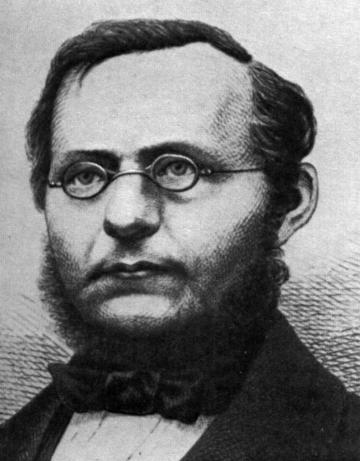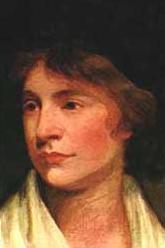Wo

Wolff, Wilhelm (1809-1864)
Born June 21 1809, Died May 9 1864. Silesian schoolmaster. In 1831, became active as a radical student organization member -- for which he was imprisoned between 1834 and 1838. In 1846, in Brussels, began close friendship with Marx and Engels. Active in the Brussels Communist Correspondence Committee. Member of the League of the Just.
Co-founder of the League of Communists – in 1848 as member of its central authority. Served as an editor of the Neue Rheinische Zeitung in 1848-9. Member of the Frankfurt National Assembly (extreme left). Emigrated to Switzerland in 1849, and to England in 1851. Upon his death, Wolff left a substantial fortune to Marx.
Marx dedicated Capital Volume I to Wolff:
"To my unforgettable friend, Wilhelm Wolff. Intrepid, faithful, noble protagonist of the proletariat."
See Engels’ Wolff biography from Die Neue Welt (1876)
Woodhull, Victoria (1838-1927)
American suffragette. Marx wrote to Engles that Woodhull and her sister, Tennessee Caflin, "are humbugs that compromise us".
Woodsworth, James Shaver (1874-1942)
Canadian Social Democratic leader.
Born 29 July 1874 on a farm near Toronto, Ontario and moved to Brandon, Manitoba in 1882. There his father served as Superintendent of Methodist Missions in Western Canada.
Like his father, Woodsworth trained for the Methodist ministry. He was ordained in 1896 and served for two years as a preacher before going to study in Toronto and Oxford, England. Discovering the plight of the East London slums, he wrote that he could never again contemplate beauty and culture without being aware of human wreckage. He returned to Canada, where he worked with urban immigrant slum dwellers. He managed and transformed the "All Peoples’ Mission" in North Winnipeg and expounded the "social gospel," calling for the establishment of the Kingdom of God "here and now." He described the poverty and suffering of immigrant workers in a number of books, including "Strangers Within Our Gates" (1909) and "My Neighbour" (1911).
By 1914 he had become a democratic socialist and he opposed the First World War as a product of capitalism and imperialist competition. Because of this, and particularly his opposition to conscription, the Canadian government fired him from his job at the Bureau of Social Research in 1917. Frail and underweight, with six children to support, he made his way to Vancouver, where he worked as a longshoreman. He organized for the recently formed Federated Labour Party.
In 1918, because of its support for the War and position on social issues, he resigned from the Methodist Church and began a tour as a speaker and advocate for working people.
In 1919 a General Strike of about 30,000 workers broke out in Winnipeg. Woodsworth briefly edited the "Strike Bulletin" of the "Western Labour News," was arrested and charged with seditious libel. The prosecution was never pursued.
Woodsworth’s role in the strike had been minor but established a firm reputation for him among supporters of labour. In 1921 the Independent Labour Party was formed in Winnipeg and Woodsworth ran for election in Winnipeg North Centre. The party was based, in part, on the British Labour Party and rejected violence and any ties with the Communist Party. Woodsworth was elected and held this seat through five federal elections. This was the first time in Canadian history that Labour MPs, without Liberal or Conservative ties, were elected to the House of Commons.
In 1926, holding the balance of Parliamentary power with one other Labour MP, Woodsworth secured the commitment of the Liberal government to pass old age pension legislation. Canada’s old age pension plan was thus introduced.
In 1932, when Canada’s first major social democratic party, the Cooperative Commonwealth Federation (CCF), was established Woodsworth became its first President.
He expressed his political philosophy as follows:
"I refuse to follow slavishly the British model or the American model or the Russian model. We in Canada will solve our problems along our own lines."
The CCF elected 7 MPs at the federal level in 1935 and provided the basis for the present New Democratic Party.
In 1939 the House of Commons debated a declaration of war on Germany. Woodsworth, maintained his pacifist position. Barely able to see, and partly paralyzed by a stroke, he was alone in the House of Commons in opposing the declaration of war. The CCF’s official position supported the declaration of war while attaching conditions to Canada’s participation in it. Woodsworth resigned from the leadership of the party and in spite of his position on the War was reelected to Parliament in 1940. His poor health, however, made him unable to play any further political role before his death on 21 March 1942.
Further Reading: Grace MacInnes: J. S. Woodsworth: A Man to Remember (1953) Kenneth McNaught: A Prophet in Politics (1959) Allen Mills: Fool For Christ: The Political Thought of J.S. Woodsworth (1991)
Alastair Campbell

Wollstonecraft, Mary (1759-1797)
Daughter of a handkerchief weaver, was born in Spitalfields, London in 1759. The family moved a great deal during Mary’s childhood and she lived for periods at Epping, Barking, Beverley, Hoxton, Walworth and Laugharne in Wales.
In 1784, Mary Wollstonecraft opened a school in Newington Green, a small village close to Hackney, with her sister Eliza and a friend, Fanny Blood. Soon after arriving in Newington Green, Mary made friends with Richard Price, a minister at the local Dissenting Chapel. Price and his friend, Joseph Priestly, were the leaders of a group of men known as Rational Dissenters. Price had written several books including the very influential Review of the Principal Questions of Morals (1758) where he argued that individual conscience and reason should be used when making moral choices. Price also rejected the traditional Christian ideas of original sin and eternal punishment. As a result of these religious views, some Anglicans accused Rational Dissenters of being atheists.
Although Mary was brought up as an Anglican, she soon began attending Richard Price’s chapel. Price held radical political views and had encountered a great deal of hostility when he supported the cause of American independence. At Price’s home Mary Wollstonecraft met other leading radicals including the publisher, Joseph Johnson. He was impressed by Mary’s ideas on education and commissioned her to write a book on the subject. In Thoughts on the Education of Girls, published in 1786, Mary attacked traditional teaching methods and suggested new topics that should be studied by girls. Two years later Wollstonecraft helped Johnson to found the journal Analytical Review.
In November, 1789, Richard Price preached a sermon praising the French Revolution. Price argued that British people, like the French, had the right to remove a bad king from the throne. Edmund Burke, was appalled by this sermon and wrote a reply called Reflections on the Revolution in France where he argued in favour of the inherited rights of the monarchy. Wollstonecraft was upset by Burke’s attack on her friend and she decided to defend him by writing a pamphlet A Vindication of the Rights of Man. In her pamphlet Wollstonecraft not only supported Price but also pointed out what she thought was wrong with society. This included the slave trade, the game laws and way that the poor were treated.
The publication of A Vindication of the Rights of Man brought Wollstonecraft to the attention of other radical thinkers such as Tom Paine, John Cartwright, John Horne Tooke, William Godwin and William Blake. Wollstonecraft met several of these men including Godwin who was busily writing a book on Political Justice. In 1791 the first part of Tom Paine’s Rights of Man was published. This book created a burst of radical activity and although Paine was forced to flee the country, others were determined to carry on the struggle in England. Soon after Rights of Man appeared, two of Britain’s leading Rational Dissenters, Richard Price and Joseph Priestly, formed the Unitarian Society, an organisation that was to have a profound influence on religious and political ideas in Britain.
The following year Mary Wollstonecraft published her most important book, Vindication of the Rights of Women. In the book Wollstonecraft attacked the educational restrictions that kept women in a state of “ignorance and slavish dependence.” She was especially critical of a society that encouraged women to be “docile and attentive to their looks to the exclusion of all else.” Wollstonecraft described marriage as “legal prostitution” and added that women “may be convenient slaves, but slavery will have its constant effect, degrading the master and the abject dependent.”
The ideas in Wollstonecraft’s book were truly revolutionary and caused tremendous controversy. One critic described Wollstonecraft as a “hyena in petticoats.” Mary Wollstonecraft argued that to obtain social equality society must rid itself of the monarchy as well as the church and military hierarchies. Mary Wollstonecraft’s views even shocked fellow radicals. Whereas advocates of parliamentary reform such as Jeremy Bentham and John Cartwright had rejected the idea of female suffrage, Wollstonecraft argued that the rights of man and the rights of women were one and the same thing.
In 1793 Edmund Burke led the attack on the radicals in Britain. He described the London Corresponding Society and the Unitarian Society as “loathsome insects that might, if they were allowed, grow into giant spiders as large as oxen.” King George III issued a proclamation against seditious writings and meetings, threatening serious punishments for those who refused to accept his authority.
In June, 1793 Mary decided to move to France with the American writer, Gilbert Imlay. The following year, Mary gave birth to Fanny. After her relationship with Imlay came to an end she returned to London. Mary married William Godwin in March, 1797 and soon afterwards, a second daughter, Mary, was born. The baby was healthy but the placenta was retained in the womb. The doctor’s attempt to remove the placenta resulted in blood poisoning and Mary died on 10th September, 1797.
See Mary Wollstonecraft Archive.
From Spartacus
Wooler, Thomas Jonathan (1786-1853)
T.J. Wooler is most famous as the editor and publisher of the early radical journal “The Black Dwarf,” which he published from 1817-1824. The journal was a strong advocate of parliamentary reform, but also took a stance in support of popular rebellion, with a definite French Revolutionary tinge, saying in 1818 that “the right of the people to resist oppression always exists ... and the requisite power to do this always resides in the general will of the people.” Wooler was also a strong supporter of radical clubs as a means of spreading radical ideas and effecting change. Sued for libel in 1817 by the government, he brilliantly defended himself, winning acquittal on one charge and having the second guilty verdict overturned. He subsequently published an account of these trials as “A Verbatim Report of the Two Trials of Mr. T.J. Wooler, Editor of the Black Dwarf for Alledged Libels, before Mr. Justice Abbott and a special Jury on Thursday, June 5, 1817.” “The Black Dwarf” went under in 1824, and Wooler became a lawyer, publishing a number of books and pamphlets on the English legal system, including a how-to guide called “Every Man His own Lawyer; comprising the law of landlord and tenant, the bankrupt and insolvent laws, the law of debtor and creditor: with instructions to commence and defend actions in person, the amounts of costs, officers’ fees, etc., the law of wills, the laws of criminal jurisprudence etc., etc.: with an appendix containing all the modern alterations in practice.”
See Black Dwarf Archive.